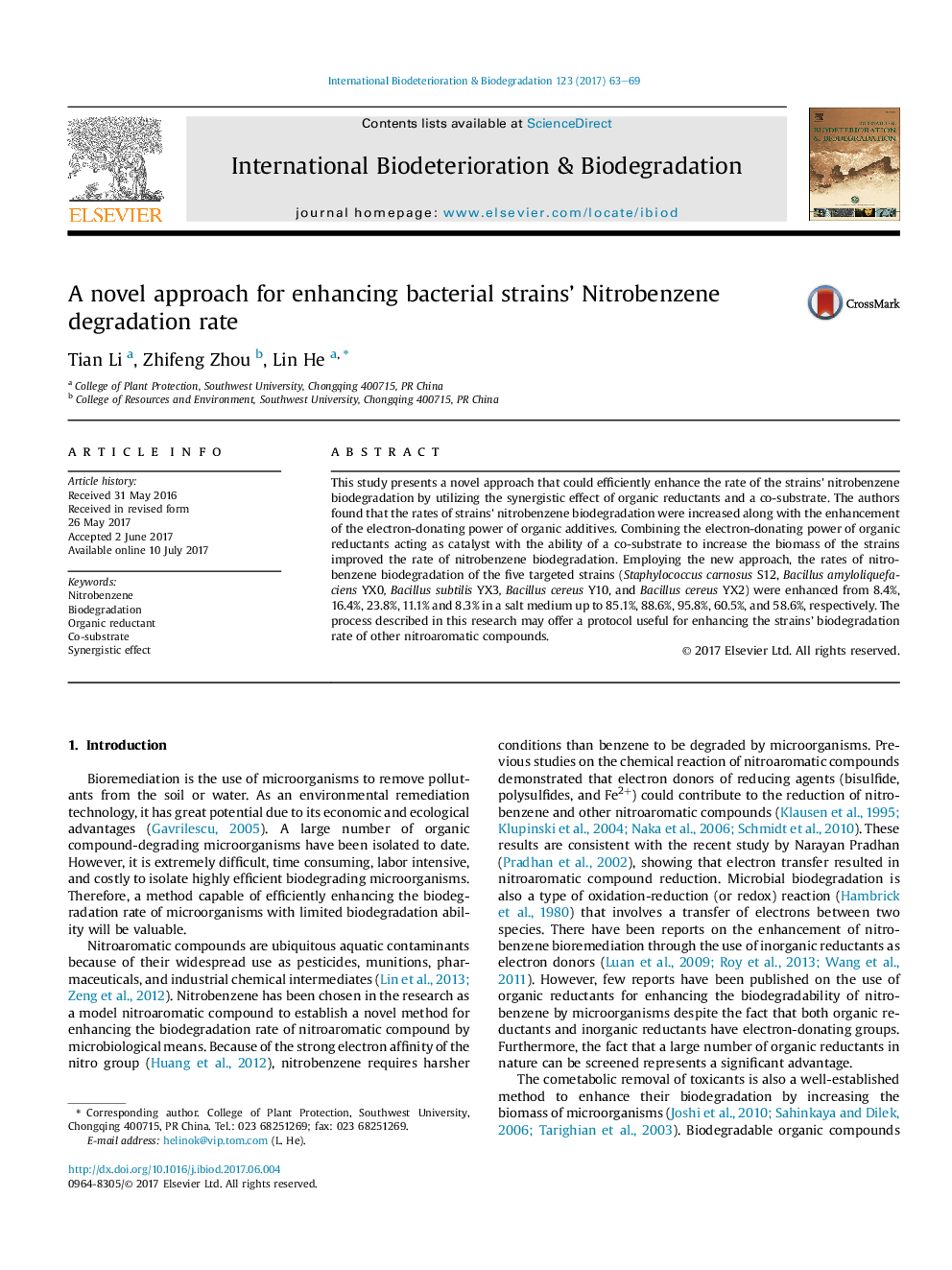| Article ID | Journal | Published Year | Pages | File Type |
|---|---|---|---|---|
| 5740252 | International Biodeterioration & Biodegradation | 2017 | 7 Pages |
â¢A novel method for enhancing a strain's nitrobenzene biodegradation rate was established.â¢The appropriate organic reducing agents could enhance nitrobenzene biodegradation.â¢The organic reductants and the substratum on nitrobenzene biodegradation have synergistic effect.â¢The method has a good prospect to enhance biodegradation in nitroaromatic compounds contaminated environments.
This study presents a novel approach that could efficiently enhance the rate of the strains' nitrobenzene biodegradation by utilizing the synergistic effect of organic reductants and a co-substrate. The authors found that the rates of strains' nitrobenzene biodegradation were increased along with the enhancement of the electron-donating power of organic additives. Combining the electron-donating power of organic reductants acting as catalyst with the ability of a co-substrate to increase the biomass of the strains improved the rate of nitrobenzene biodegradation. Employing the new approach, the rates of nitrobenzene biodegradation of the five targeted strains (Staphylococcus carnosus S12, Bacillus amyloliquefaciens YX0, Bacillus subtilis YX3, Bacillus cereus Y10, and Bacillus cereus YX2) were enhanced from 8.4%, 16.4%, 23.8%, 11.1% and 8.3% in a salt medium up to 85.1%, 88.6%, 95.8%, 60.5%, and 58.6%, respectively. The process described in this research may offer a protocol useful for enhancing the strains' biodegradation rate of other nitroaromatic compounds.
Graphical abstractDownload high-res image (212KB)Download full-size image
